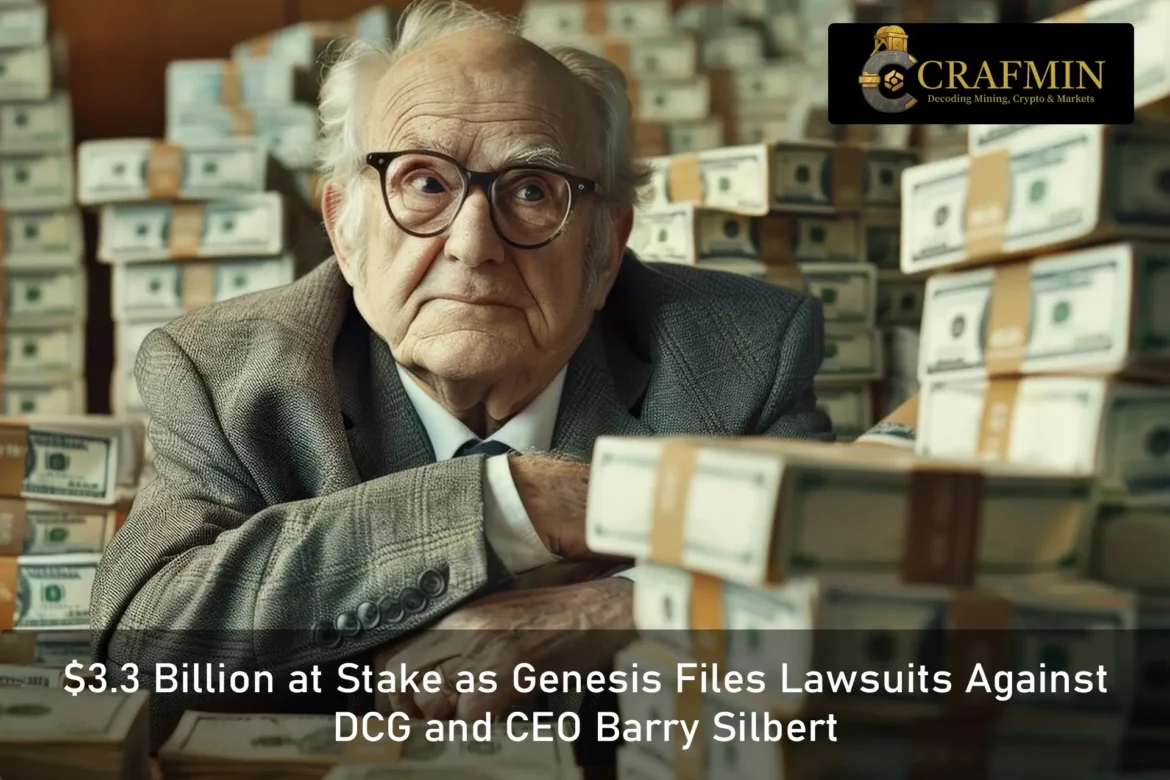Allegations of Hidden Transfers and Reckless Lending
Genesis has filed two major lawsuits against its parent company, Digital Currency Group (DCG), and its CEO Barry Silbert, claiming they misused company funds and defrauded creditors. The lawsuits seek to recover more than $3.3 billion in total, with accusations of fraud, insider enrichment, and hidden financial transfers.

Image 1: Barry Silbert, CEO of Digital Currency Group. (Source: Fortune Crypto)
These cases mark a significant escalation in the legal fallout from Genesis’s collapse and involve other executives and advisors who allegedly played key roles in the events that led to the company’s downfall.
Claims of Mismanagement and Concealed Transfers
Genesis filed the first lawsuit on 13 May 2025 in the Delaware Court of Chancery. The second was submitted on 19 May 2025 in the U.S. Bankruptcy Court for the Southern District of New York. Both legal actions were brought by the Genesis Litigation Oversight Committee (LOC), which was appointed by the court to recover funds for creditors.
The LOC alleges that Genesis was used like a personal ATM for DCG and Barry Silbert. According to the complaint, over 1 million digital coins — worth roughly $2.1 billion — were transferred out of Genesis, even as the company approached insolvency. Genesis creditors are still owed significant sums, including over 19,000 Bitcoin, around 69,000 Ether, and more than 17 million other crypto tokens, plus fees and interest as of February 2025.
The Delaware filing accuses Barry Silbert and others of operating Genesis without a proper board of directors or independent oversight. The lawsuit claims Genesis was directed to issue loans that mainly served DCG’s interests, particularly in connection to its investment arm, Grayscale.
Barry Silbert and other executives, including Michael Kraines and Mark Murphy, are alleged to have staged fake transactions near the end of certain financial quarters in 2022. These moves were reportedly intended to make it look like DCG was financially supporting Genesis, when in reality it was not.
Use of GBTC and the Promissory Note
The lawsuits also focus on the use of Grayscale Bitcoin Trust (GBTC) shares. Genesis says it was forced to accept these shares as collateral, despite them being hard to sell due to SEC restrictions and an internal prohibition on reselling. This arrangement increased the risk to Genesis and its creditors.
In one key instance after the collapse of Genesis’s borrower, Three Arrows Capital (3AC), DCG gave Genesis a promissory note for $1.1 billion. However, this note was not payable for a decade and did not provide immediate cash. Genesis reportedly told customers that this note improved its financial position, which the LOC says was misleading.
The Delaware complaint accuses DCG and Genesis leaders of covering up the company’s true financial state. It claims that the company misrepresented its solvency, asset values, and the real terms of the promissory note to lenders and customers alike. This created a false image of financial health, even though the company was already under severe strain.
Genesis also allegedly continued lending to failed firms like 3AC and Alameda Research, even after warning signs appeared. The LOC says this reflected a pattern of ignoring basic risk controls in favour of moves that benefited DCG and Grayscale.
Insider Withdrawals and Bankruptcy Court Case
The second complaint, filed in New York’s bankruptcy court, adds further detail. It claims that insiders, including DCG and Silbert, withdrew more than $1.2 billion from Genesis in the year leading up to its bankruptcy filing. These withdrawals were reportedly timed around major market events, such as the crashes of Terra-Luna, 3AC, and FTX.
According to the complaint, insiders pulled out their assets while the broader public was reassured that Genesis remained in good health. The LOC says these withdrawals happened even though Genesis was insolvent and struggling to cover its liabilities. Internal records indicate insiders recovered their money in full, while most other creditors were left with major losses.
The bankruptcy complaint also accuses DCG of collecting over $34 million from Genesis through a so-called “tax sharing agreement” that did not actually exist.

Image 2: Crypto (Source: BFSI)
Efforts to Recover Funds for Creditors
The Genesis Litigation Oversight Committee is seeking to recover cryptocurrency and cash “in-kind,” meaning they want the same types of assets returned rather than just their cash value. This is intended to ensure that creditors can benefit from any future price increases in those digital assets.
Both lawsuits seek to hold accountable not only DCG and Barry Silbert, but also former Genesis CEO Michael Moro, former DCG CFO Michael Kraines, DCG President Mark Murphy, and the advisory firm Ducera Partners.
The LOC is represented by Selendy Gay PLLC. According to its legal team, the lawsuits aim to expose what they describe as reckless and self-serving actions by the company’s leadership. The LOC says these actions directly caused the collapse of Genesis and resulted in billions in losses for both individual and institutional creditors.
The committee plans to challenge the redactions in the Delaware complaint to make more evidence available to the public.
Genesis filed for bankruptcy in early 2023 with $14 billion in outstanding loans. A separate lawsuit by the New York Attorney General accusing DCG and Genesis of misleading investors is also moving forward.

